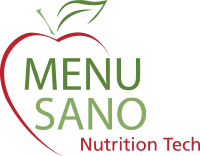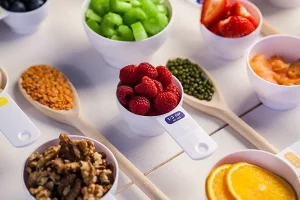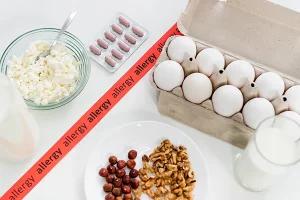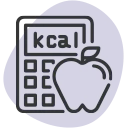Key Takeaways
- RACC defines the standard serving size for food based on typical consumption data.
- Using the correct RACC ensures FDA-compliant Nutrition Facts Labels and transparency for consumers.
- Serving sizes must be based on RACC values and listed in household measures and metric units.
- Products with packaging sizes close to one RACC may need dual-column labelling for serving and per-package information.
- Identify your product’s category in 21 CFR 101.12 and follow FDA rounding rules to find the correct serving size.
Creating FDA-compliant nutrition labels is essential for food manufacturers, dietary supplement producers, and any business involved in packaging consumables. The Reference Amount Customarily Consumed is critical in this process. Understanding what RACC is, why it matters, and how to apply it correctly can determine whether your product meets FDA regulations — and whether your consumers receive truthful, compliant nutritional information.
What is a RACC?
Stands for Reference Amount Customarily Consumed, it’s a standardized amount of food that people typically eat or drink per eating occasion. These values are not random; they are derived from nationwide food consumption data, particularly large-scale food consumption surveys conducted by the U.S. Department of Agriculture (USDA).
The FDA established RACC values in 21 CFR 101.12, which include detailed tables categorizing foods by product type and their corresponding values in grams or millilitres. These values are the foundation for determining the serving size listed on a product’s Nutrition Facts Label.
Serving sizes on labels must reflect the amount of food customarily consumed, not the amount recommended for consumption or the portion size the manufacturer wants to promote. For example, the RACC for yogurt is 170g, while the RACC for soft drinks is 360 ml. These standardized portions enable consistent comparison across similar products on the market.
Why is the RACC Important?
RACC ensures consistency and accuracy in labelling across the food industry. Its significance extends across various domains:
- Regulatory Compliance: A nutrition facts label may be considered non-compliant without adhering to the correct values, leading to FDA enforcement actions.
- Consumer Trust and Transparency: Accurate serving sizes based on RACC allow consumers to make informed decisions. It avoids misleading portions that may understate calories, sugars, or sodium content.
- Product Comparability: By using the same RACC across similar food types, consumers can reliably compare one product’s nutritional profile to another’s.
- Serving Size Determination: The RACC is the starting point for defining the Serving Size, which must be declared on the label using common household measurements (e.g., cup, tablespoon, piece) alongside its gram weight.
- Dual Column Labelling: For products that are reasonably consumed in one sitting but contain more than one RACC (e.g., a 20 oz soda), the FDA may require dual-column labelling, showing nutrition information per serving and package.
How to Use the RACC to Find the Serving Size for Your Product
Determining the correct serving size for your product begins by consulting the FDA’s RACC tables. Follow these steps to align your product’s Nutrition Facts Label with FDA standards:

Step 1: Identify the Product Category
Locate the most appropriate product category in the RACC tables from 21 CFR 101.12. The category should reflect how your product is primarily consumed. Be as specific as possible — for example, differentiating between “ready-to-eat cereal” and “hot cereal.”
Step 2: Determine the RACC Value
Once you identify the category, find the corresponding RACC value, usually in grams or millilitres. This is the base reference amount used to calculate the serving size.
Example:
- Product: Chocolate Pudding
- Category: “Puddings”
- RACC: 15g
Step 3: Convert the RACC to a Common Household Measure
The Serving Size displayed on the Nutrition Facts Label must include a household measure (e.g., 1/2 cup, 1 slice, 2 pieces) followed by its metric equivalent (in grams or millilitres).
You will need to weigh or measure how much of your product fits the RACC and find the closest appropriate household measurement.
Example:
Let’s say you manufacture a creamy tomato soup. According to the FDA’s RACC table, the reference amount for soup is 245g. When you portion out 245g of your soup, it fills 1 cup. Therefore, your label should read:
Serving Size: 1 cup (245g).
This practical application ensures consistency and compliance while helping consumers understand exactly how much soup they get in one serving.
Step 4: Round According to FDA Guidelines
The FDA provides rounding rules for serving sizes and nutrients. For serving size, you must round to a meaningful household amount. For instance, if your weighed portion is 134g and equates to a little more than 1/2 cup but less than 2/3 cup, then 2/3 cup (134g) may be appropriate, depending on the closest household unit.
Step 5: Account for Packaging Scenarios
- Single-Serving Packages: If your product contains less than 200% of the RACC and is typically consumed in one sitting, label it as a single-serving.
- Multi-Serving Packages: For packages containing more than one RACC, state the serving size in household measures and grams, and declare servings per container.
- Dual-Column Labels: If the package contains more than one serving but could be consumed simultaneously (e.g., between 200% and 300% of the RACC), include both per serving and per package nutritional information.
Common RACC Missteps to Avoid
- Incorrect Product Category: Choosing the wrong category can drastically affect the RACC and serving size.
- Using Market Portions Instead of RACC: The FDA requires you to use RACC-based servings, not portion sizes promoted for marketing.
- Neglecting Density Conversion: Proper gram-to-cup conversion is critical for products like soup, yogurt, or salad dressing.
- Skipping Dual Column Labelling: Failure to correctly label a multi-serve but typically single-use product (e.g., a large beverage) could trigger regulatory scrutiny.
Streamline Nutrition Labelling with MenuSano
Using a tool like MenuSano can greatly simplify the nutrition labelling process. MenuSano’s nutrition analysis software helps you calculate accurate serving sizes, apply the correct RACC values, and easily generate FDA-compliant Nutrition Facts Labels. Whether labelling a single product or managing a full line, MenuSano streamlines compliance, reduces manual errors and saves valuable time for food businesses.
Using the Reference Amount Customarily Consumed is not optional—it is the cornerstone of FDA-compliant food labelling. It ensures that serving sizes are accurate, trustworthy, and comparable across the marketplace. By correctly applying the RACC values outlined in 21 CFR 101.12, manufacturers meet compliance requirements and build transparency and confidence with consumers.
Understanding and applying the RACC accurately is one of the most important steps in nutrition labelling if you’re developing a food product, updating your label, or entering the U.S. market.



















